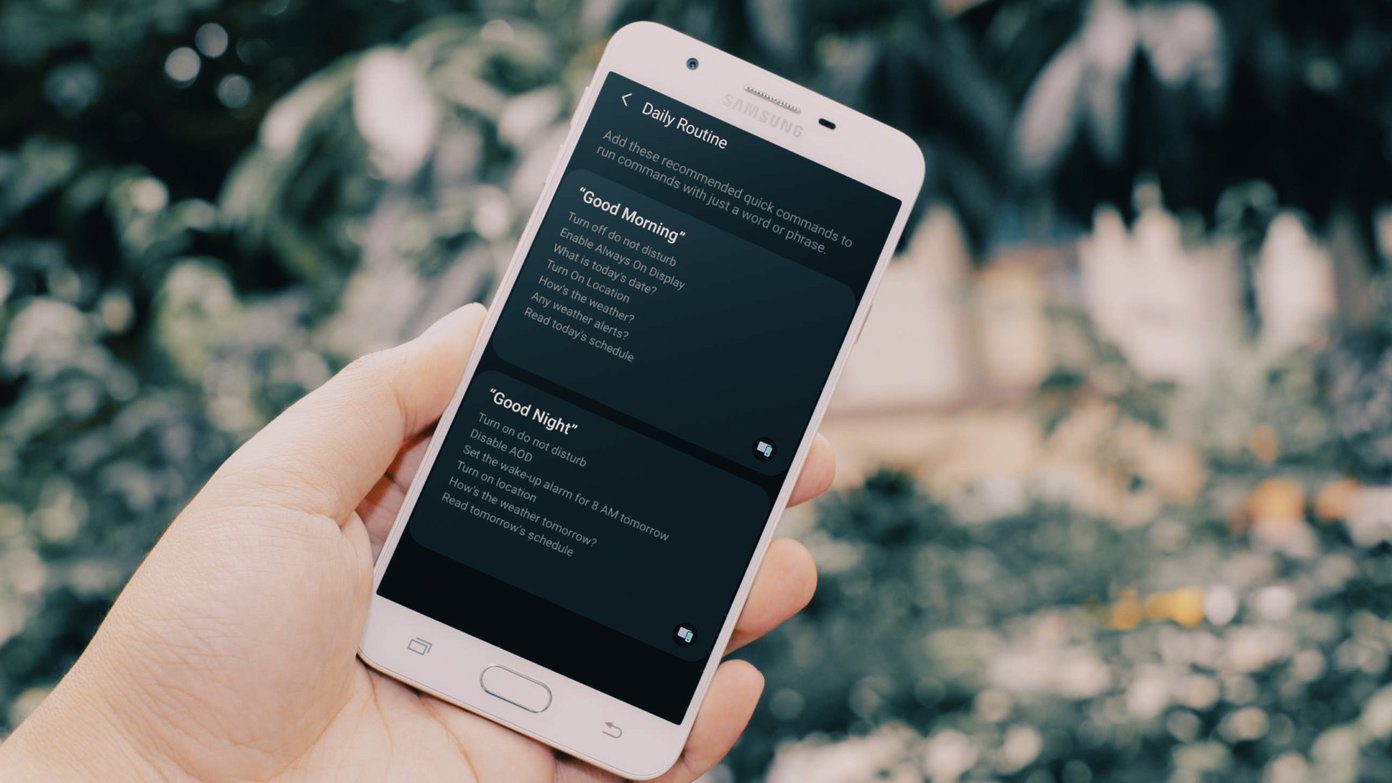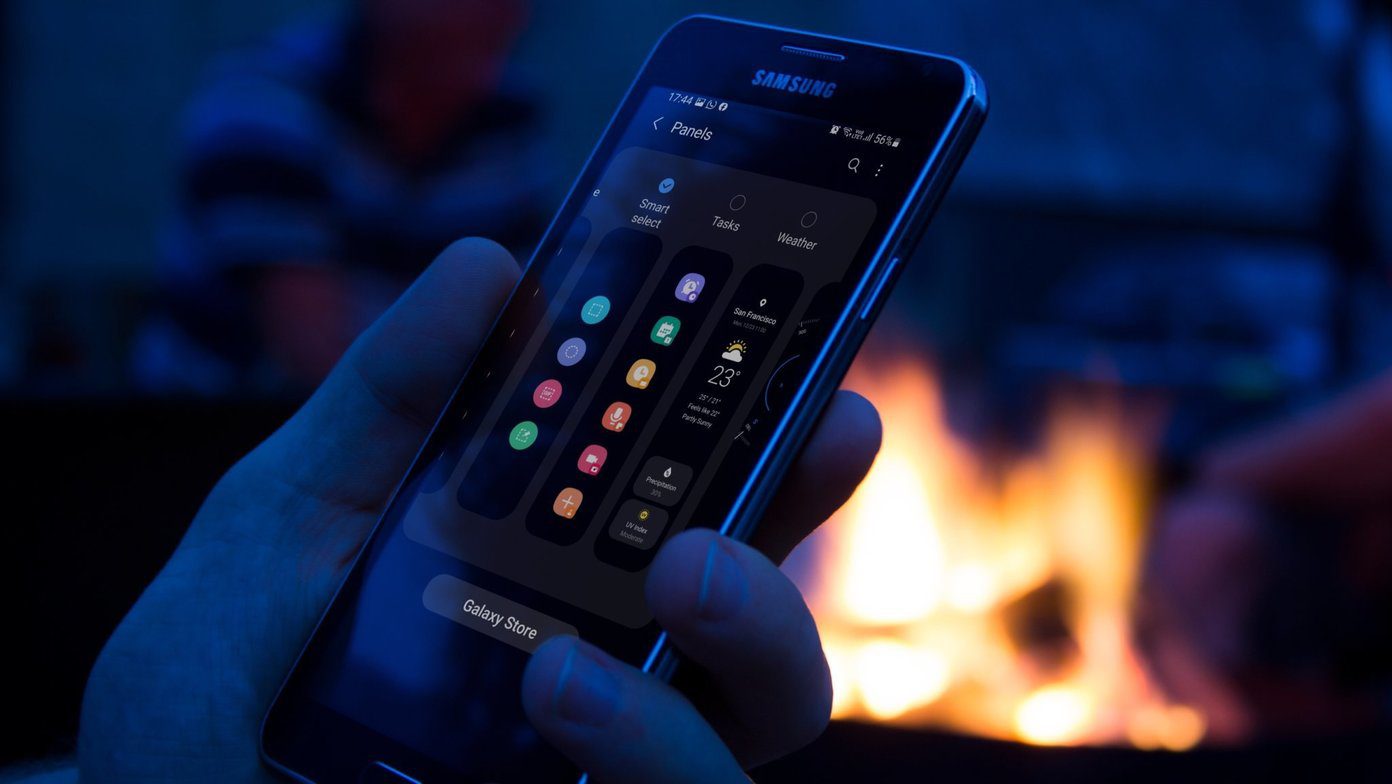First, let’s understand what’s Always On Display (AOD). AOD allows you to customize your screen to show time, date, battery status, notifications, screen savers, etc. It’s mostly useful in AMOLED screens as AOD only turns on the individual pixels on the screen. On LCD panels, the whole display needs to be turned on to enable Always On Display mode, which is not battery-friendly and doesn’t look good at night times. Android OEMs also offer Always On Display function, but Samsung goes step ahead with tons of customization options, neat integration, AOD from the Theme store, etc. Now that most Galaxy phones come with gigantic battery capacity, it makes sense to enable the option and use the full potential of AOD on Samsung phones. In this post, we will talk about the complete step-by-step instructions to enable and use Always On Display, its customization options, third-party AOD from the Theme Store, and its effect on the device battery life. Let’s get started.
Where Is Always on Display on My Phone
There are two ways to access Always-On Display mode on the Galaxy device. You can drop down the notification bar and use the notification toggles to turn on or off AOD mode on the phone. Another way is from the Setting app. Open the Settings app on your phone and navigate to Lock screen and enable the Always On Display option. You will be mostly fine with the AOD toggle in the notification bar. You should only use the Settings app when you want to customize the AOD mode or set the time. Speaking of customization, let’s explore all the features of the AOD mode.
Always on Display Customization Options
Samsung being Samsung, is offering dozens of customization options to set up the Always On Display mode. First, there are three ways to showcase AOD on the lock screen. You need to go to device Settings > Lock screen > Always On Display and discover all the options. Tap to show: Most Android phones offer the tap to show function, but it turns on the whole display, and it may consume more battery if you are using tap to show frequently. Samsung’s solution lets you tap on the display, and it will showcase the AOD for 10 seconds. It’s the best of both worlds. Tap to show serves the purpose without affecting battery life much. Show Always: As the name suggests, it will keep the AOD mode enabled all the time. You should keep track of the battery usage as it may consume more battery life. Show As Scheduled: This one is my favorite, and I prefer to use it compared to the other two options. You can set a certain time to showcase the AOD on the lock screen. I mostly keep it from 8 AM to 11 PM. Tap on the option and select the start and end time Now, let’s customize the AOD look with different clock styles, colors, and music information. Follow the steps below to personalize the look of the AOD mode on your Galaxy device. Step 1: Open the Settings app on the device and navigate to Lock Screen > Always On Display menu. Step 2: Set the AOD mode as per your preference and open the Clock style menu. Step 3: Here, you will see a bunch of clock styles. Samsung offers clock preview at the top. You will see other information like remaining battery life, date, and day as well. Step 4: Move to the Color option and see dozens of color options and gradient effects. You can also enable show music information, and AOD will showcase the live music track on the lock screen.
Third-Party Always on Display Modes
Your choice to customize Always On Display doesn’t end here. Samsung packs a theme store on all Galaxy devices. Using the Theme store, you can completely change the look and feel of the device. Long-press on the home screen and open Theme Store. Move to the AOD menu, and here, you will see all the third-party Always On Display modes with live preview and price. I like how Samsung has added Editor’s pick to streamline to the selection process.
A Few Things to Note About AOD Mode
Always On Display will consume battery life. On average, it consumes about 1% battery life per hour.You will notice AOD mode keep changing the clock position. The behavior is expected to avoid the AMOLED screen burn-in.You can use the notification toggle or opt for the Settings app to disable the Always On Display mode on your device.Samsung also allows you to set an image as the AOD background, but I would advise you to avoid it as it uses more pixels and consumes more battery life.
Use Always on Display on Galaxy Devices
Samsung’s AOD mode is one of the best features of the One UI software. You should enable the option and customize the experience to your liking from the Settings app. While you are at it, do show us your current setup of AOD mode on the Galaxy device. Next up: Are you looking to master Samsung One UI? Read the post below to find the top eleven Samsung One UI home launcher tips and tricks. The above article may contain affiliate links which help support Guiding Tech. However, it does not affect our editorial integrity. The content remains unbiased and authentic.
















